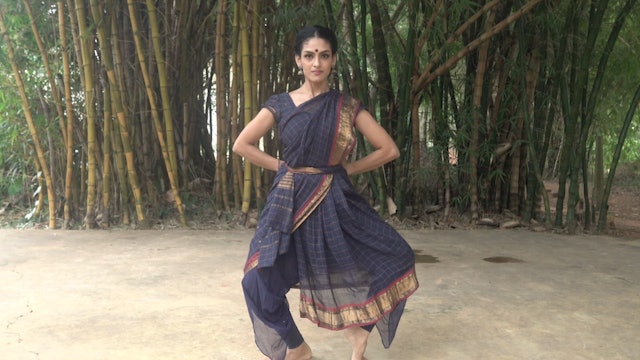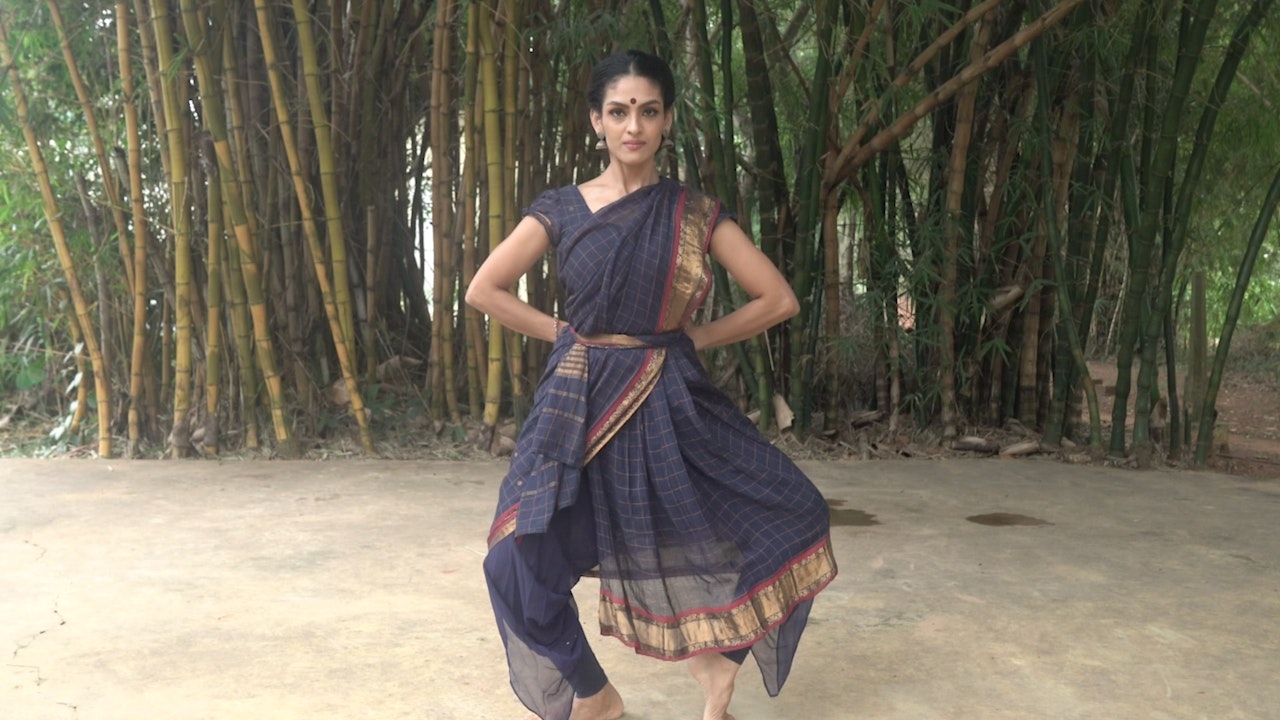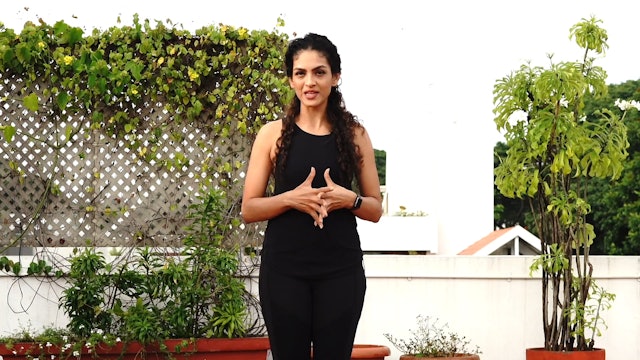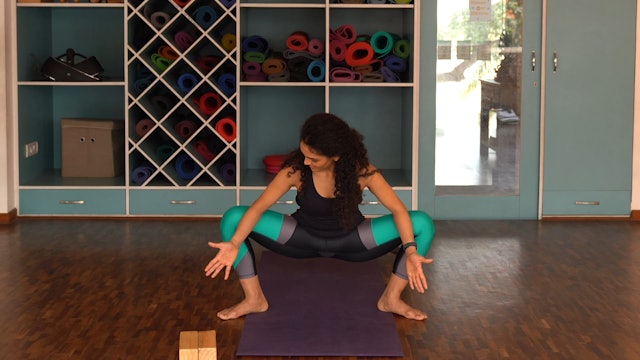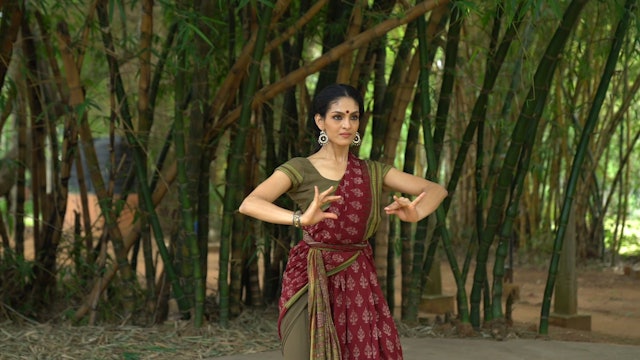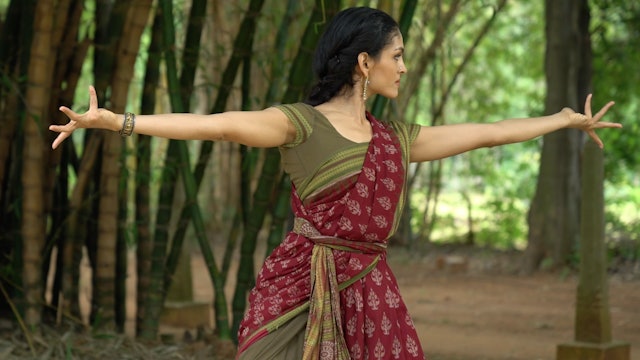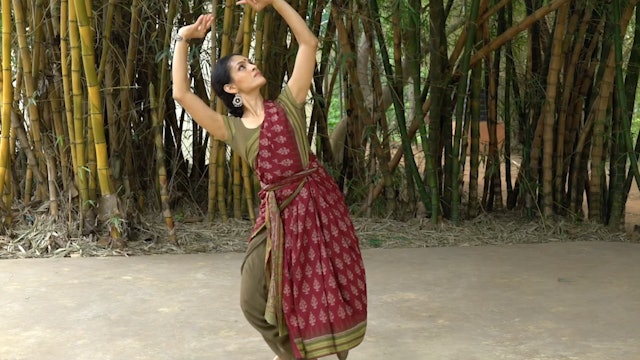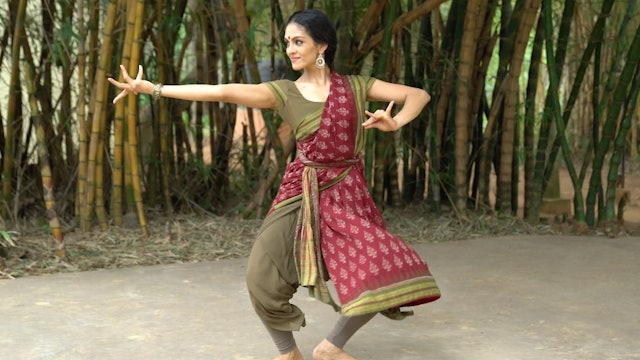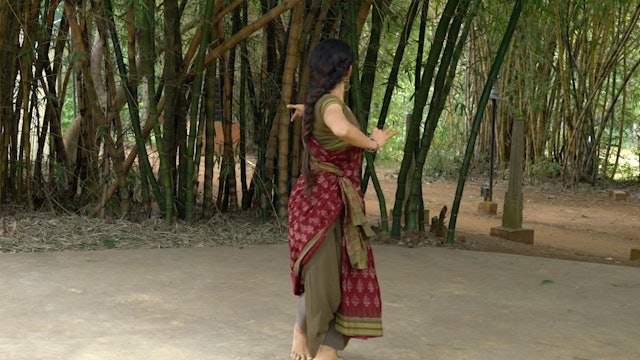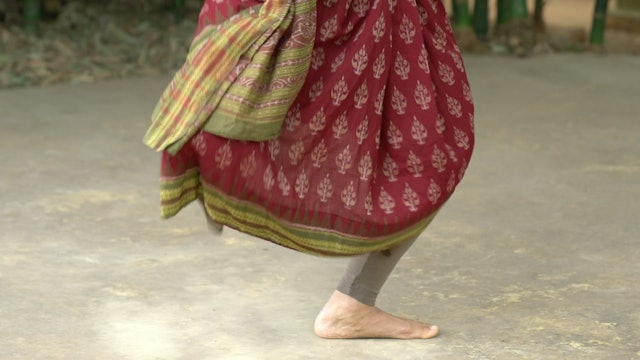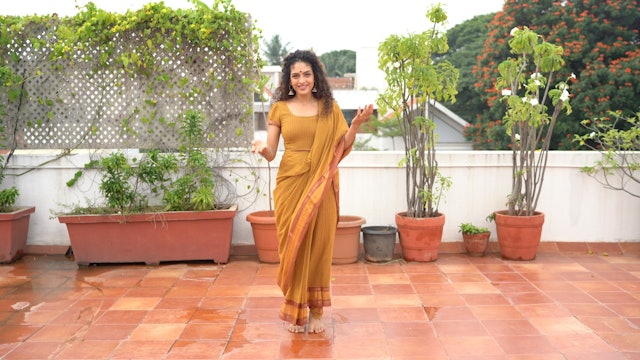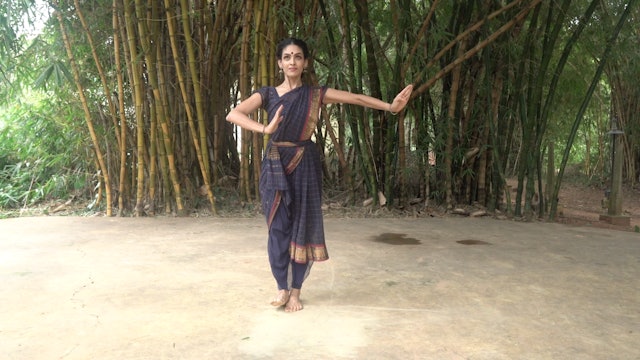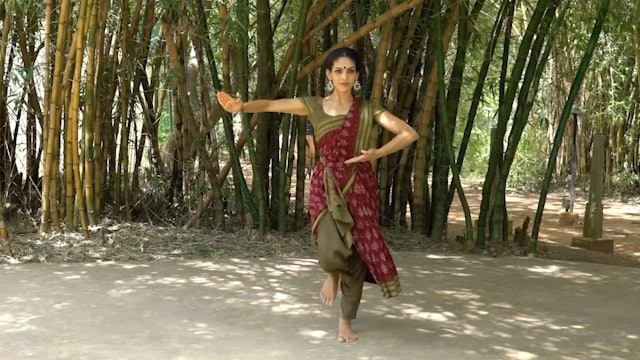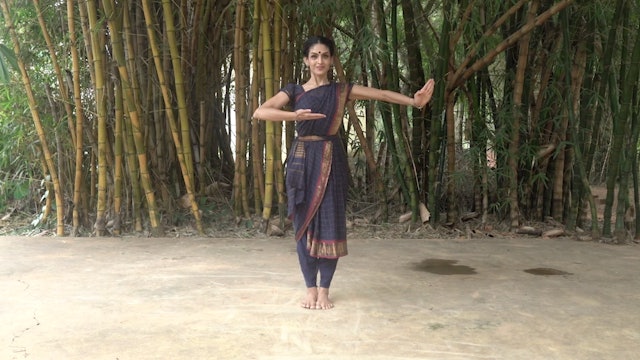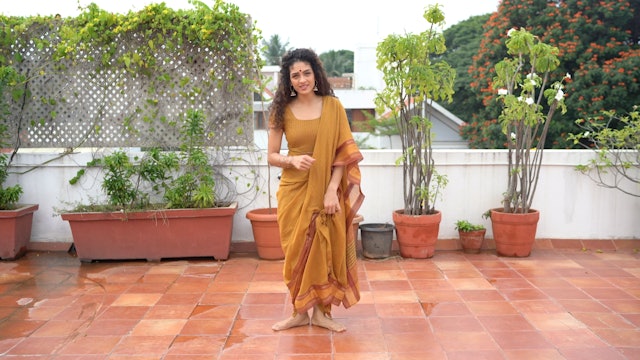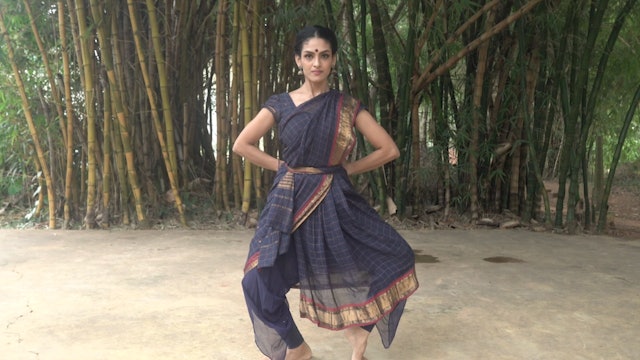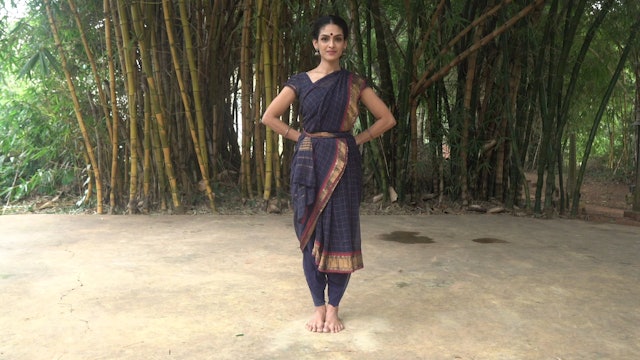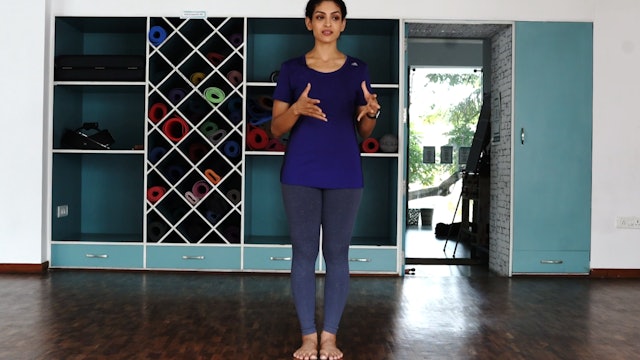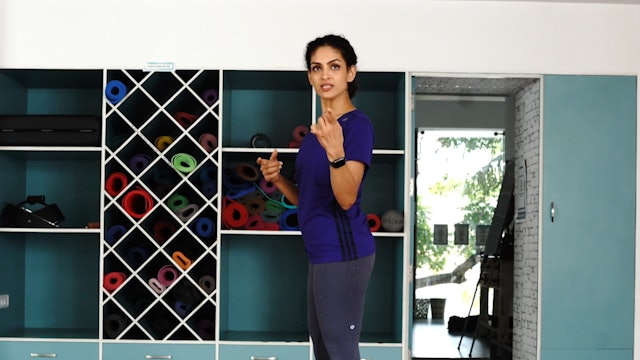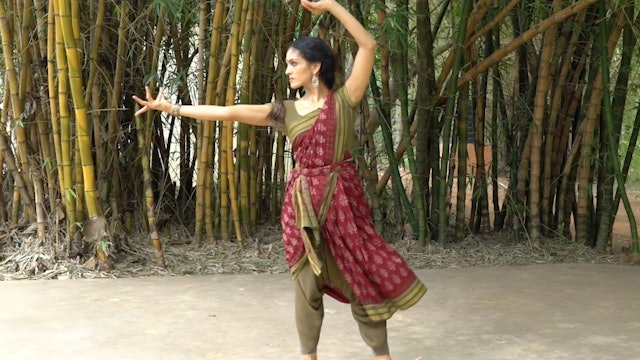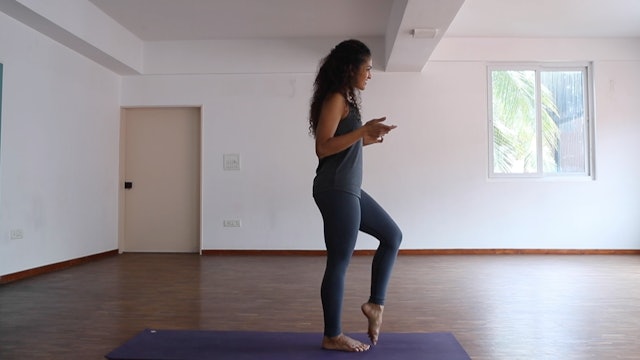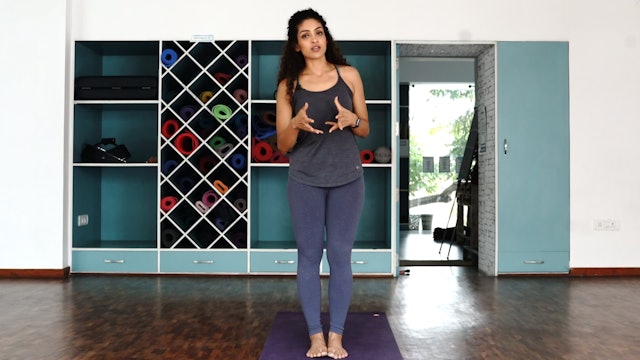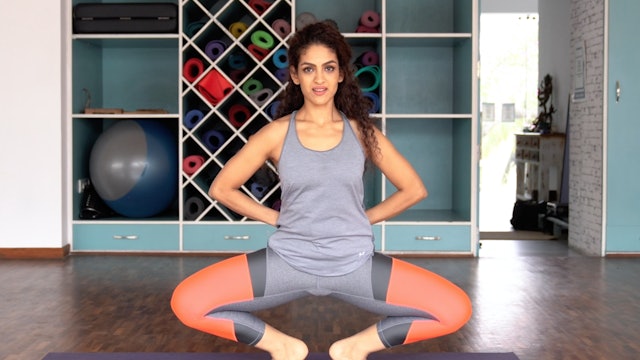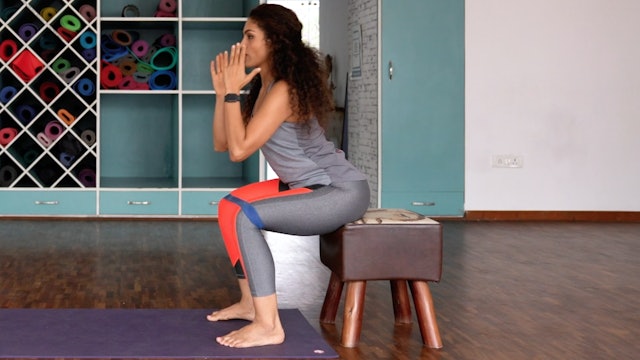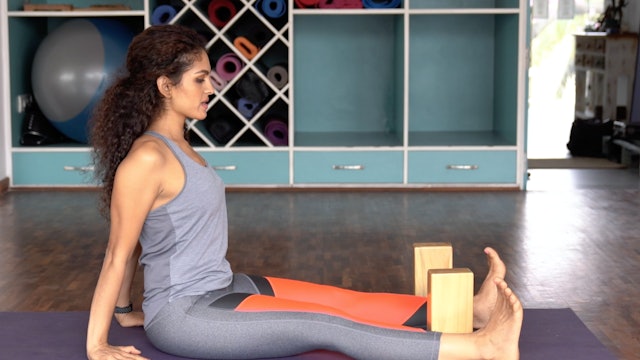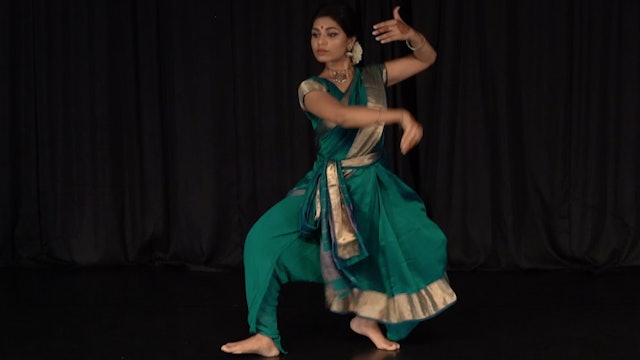Playlist 25
As the playlists progress, learning to coordinate and incorporated the isolations that are learned through the bhedas in the practise of adavus is important. The Adavu variations enable these varied approaches to torso, and limbs to create dynamic variations in the Adavus.
The choreography of the Tillana in Raga Vallachi is also introduced in this, alongside short videos that exemplify the mechanics of turning.
-
The complete Raadha Kalpa Warm Up: Level 1
This Warm- up is quite a bit more demanding than the previously introduced sequences, so please make certain that you have practised the following though the past months, atleast 5 times each, slowly with awareness before doing this warm-up.
Legs and core 1, 2
Obliques and flat back
Warm up Iso... -
Hip Openers
This series can be practiced after a basic warm up, before beginning an Adavu practice.
The hip opener series will help you navigate through tight hips. It will help you mobilise your hips and enable you to push your thighs back while sitting in Araimandi. Please do this in combination with str...
-
Pakkadavu 1
Pointers for Pakkadavu 1:
Watch the level of your arms. Make sure you maintain the length of your neck. Turn to the side with your head straight, without tilting. Keep your eyeballs in the centre of your eyes. When you reach to the side, do not raise the opposite elbow. maintain length.
The ...
-
Pakkadavu 2
Pointers for Pakkadavu 2:
Keep your shoulders down when stretching your arms.
Keep the height of the arm that you are looking away from. It is common to let this arm go too far back or let it drop below shoulder height.
Keep your head straight when you look to the side.
Make sure you keep you... -
Pakkadavu 3
Pointers for Pakkadavu 3:
Keep your shoulders down when lifting your arms.
Make sure your arms do not go too far back.
Follow your arm and keep your gaze toward the wrist of the arm you are bending away from.
Make sure you keep your thighs pushing back while retaining Swastikam in your feet.
... -
Paraval Adavu 1
Paraval literally means to spread. Some schools of thought also call the Paraval adavu, the 'Pakkadavu' as it moves to the side while sliding. Some others change the name based on the way the foot articulates with the floor. A few of the types of Paraval, can be referred to as Marditam adavau, as...
-
Paraval Adavu 2
Paraval literally means to spread. Some schools of thought also call the Paraval adavu, the 'Pakkadavu' as it moves to the side while sliding. Some others change the name based on the way the foot articulates with the floor. A few of the types of Paraval, can be referred to as Marditam adavau, as...
-
Parval Adavu 3
Paraval literally means to spread. Some schools of thought also call the Paraval adavu, the 'Pakkadavu' as it moves to the side while sliding. Some others change the name based on the way the foot articulates with the floor. A few of the types of Paraval, can be referred to as Marditam adavau, as...
-
Jaar Adavu variations: Instructions
'Jaaru', literally means, to slide. This is also called the Sarikal Adavu. In the RK Method, we refer to the standing series that end in Samapada as the Jaar Adavu series and the other sliding Adavus that use Muzhumandi, and Aalidam as Sarikal adavus for simplicity.
This Adavu incorporates the s...
-
Jaar Adavu/ Sarikal Adavu 1
'Jaaru', literally means, to slide. This is also called the Sarikal Adavu. In the RK Method, we refer to the standing series that end in Samapada as the Jaar Adavu series and the other sliding Adavus that use Muzhumandi, and Aalidam as Sarikal adavus for simplicity.
This Adavu incorporates the s...
-
Jaar Adavu/ Sarikal Adavu 2
'Jaaru', literally means, to slide. This is also called the Sarikal Adavu. In the RK Method, we refer to the standing series that end in Samapada as the Jaar Adavu series and the other sliding Adavus that use Muzhumandi, and Aalidam as Sarikal adavus for simplicity.
This Adavu incorporates the ...
-
Jaar Adavu/ Sarikal Adavu 3
'Jaaru', literally means, to slide. This is also called the Sarikal Adavu. In the RK Method, we refer to the standing series that end in Samapada as the Jaar Adavu series and the other sliding Adavus that use Muzhumandi, and Aalidam as Sarikal adavus for simplicity.
This Adavu incorporates the s...
-
Thattu Mettadavu: Instructions
The instructions explain how to do the Thattu Mettadavus with accuracy and clarity of movement.
Make certain to do the Araimandi series to increase strength in the legs. Also practise hip-openers and squats.
-
Thattu Mettadavu 1 : Tishram
This Adavu has two components, a tapping action with one foot that comprises of the Thattu, and the Udgattitham action on the other leg with a heel. Sometimes both the tap and the Udgattitam can happen on the same foot, depending on the Jathi.
Pointers:
- Try to make sure the heel is lifted pro... -
Thattu Mettadavu 2 : Chatushram
This Adavu has two components, a tapping action with one foot that comprises of the Thattu, and the Udgattitham action on the other leg with a heel. Sometimes both the tap and the Udgattitam can happen on the same foot, depending on the Jathi.
Pointers:
- Try to make sure the heel is lifted pro... -
Turns: Introduction
Turning is an important part of dancing, and it is integral to precision when there is a change of direction and dynamics in adavus. Focus and core engagement is at the crux of turning and must be paid attention to.
-
Step & turn
The Step & Turn, explains how the mechanics of the first Bramari adavu works. It incorporates ideas of balance and focus adding an element to the first introduction on turns.
-
Bramari Adavu
Bramari literally means to turn. The first Bramari adavu is introduced in the second set of Adavus, the other varieties will be introduced subsequently. It is important to keep the eyes focussed at a particular point and turn the head faster than the body.
Things to keep in mind:
- When stretc... -
Using your feet in a jump
This series will deal with a number of short exercises that will help the student develop awareness and alignment when jumping. It must be done in combination with the strength exercises to have maximum benefit.
Please do not do the jumps if you experience knee pain.
You must be warmed up befo... -
Jumps in Parallel
This series will deal with a number of short exercises that will help the student develop awareness and alignment when jumping. It must be done in combination with the strength exercises to have maximum benefit.
Please do not do the jumps if you experience knee pain.
You must be warmed up befo... -
Aramandi Tips 4
This series will deal with a number of exercises that will work with developing a strong and stable Araimandi. It will also help resolve issues with knee and ankle pain. It must be practised in combination with the Hip openers and Leg strength for maximum benefit.
-
Knee Alignment 5: Squat with resistance band and chair
This video will address knee alignment during a squat, while simplifying the exercise for those who need to work slowly.
Align your knees and stay safe. These videos will help you reinforce alignment and thus help you employ proper usage of the knee joint through movement. The videos will addre...
-
Knee Alignment 4
Align your knees and stay safe. These videos will help you reinforce alignment and thus help you employ proper usage of the knee joint through movement. The videos will address common misnomers as well as small strengthening exercises that can be practised on days that you do not dance. Try to re...
-
Pushpanjali
Pushpanjali
Raaga: Aarabhi
Aditala
Composer: Dr Balamuralikrishna
Choreography: Rukmini VijayakumarThe Pushpanjali is choreographed with many rhythmic layers. You will have an appending document that you can download to understand the Rhythm clearly.
There is an added verse from the Ganesha P...
